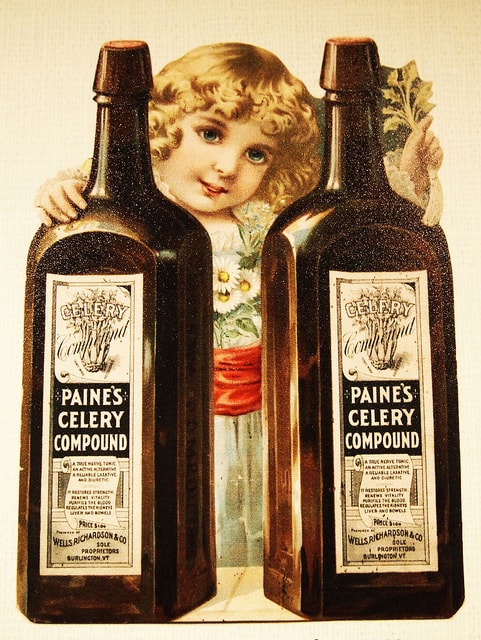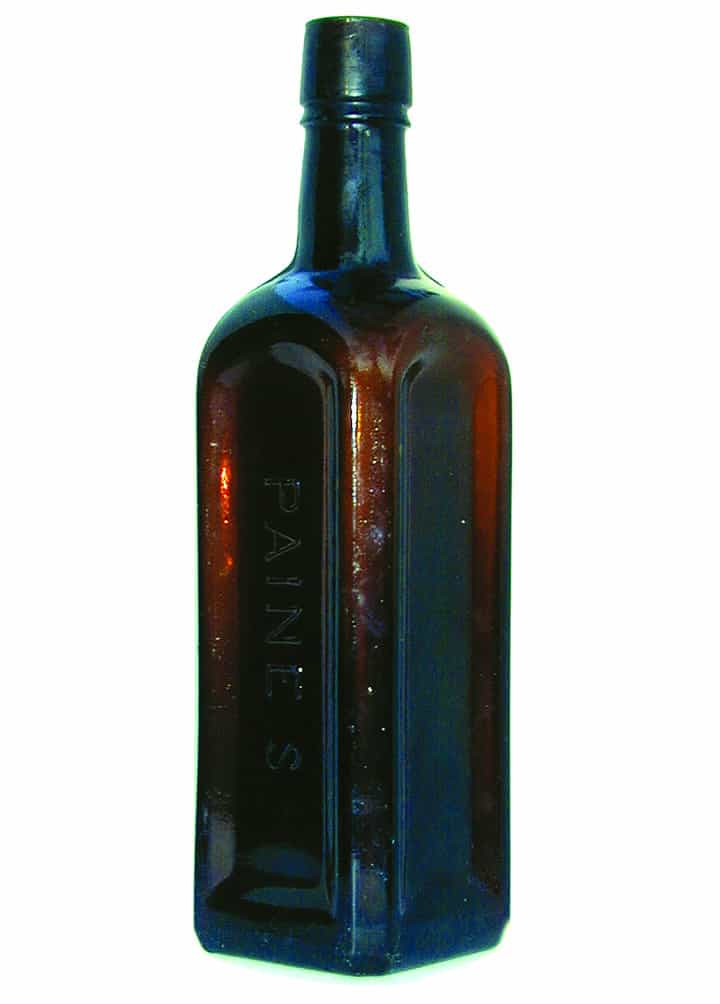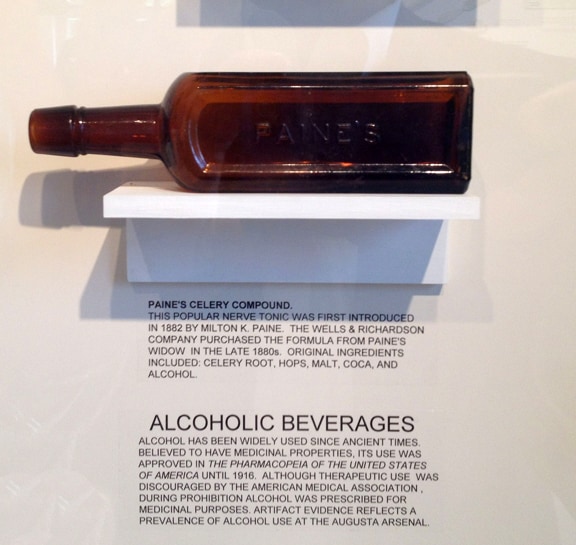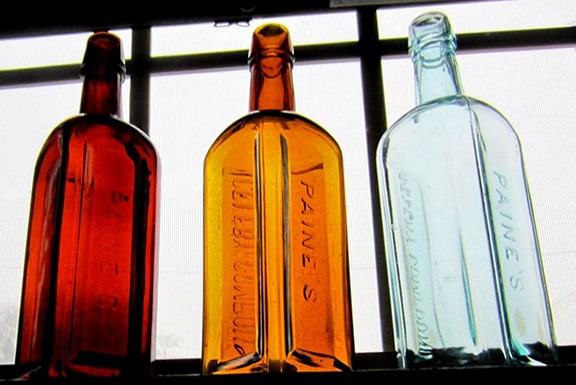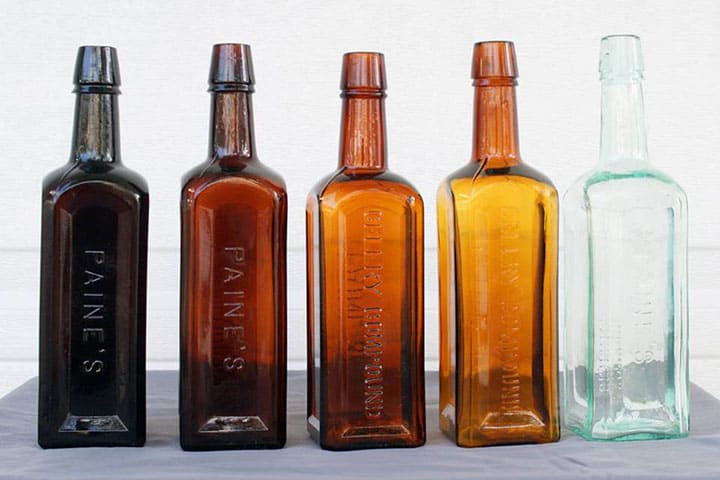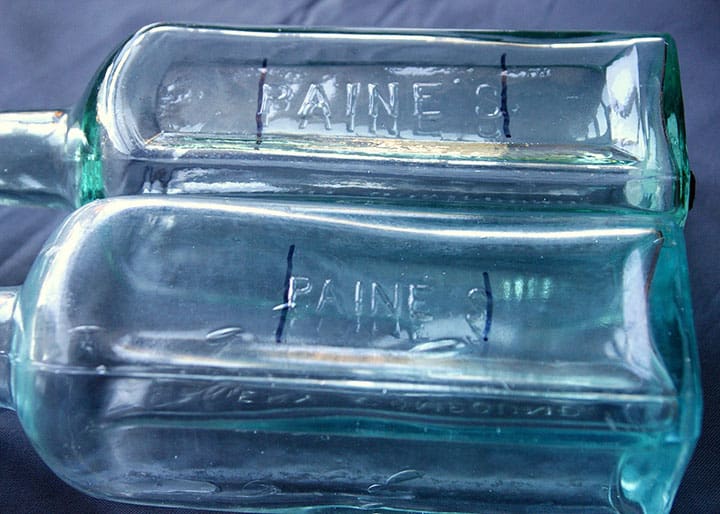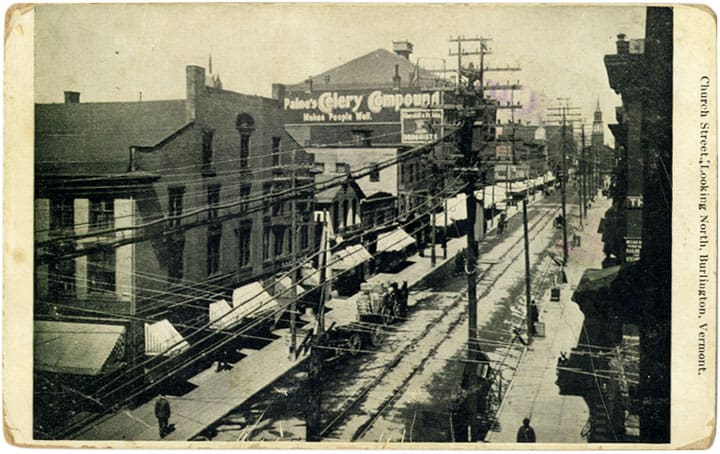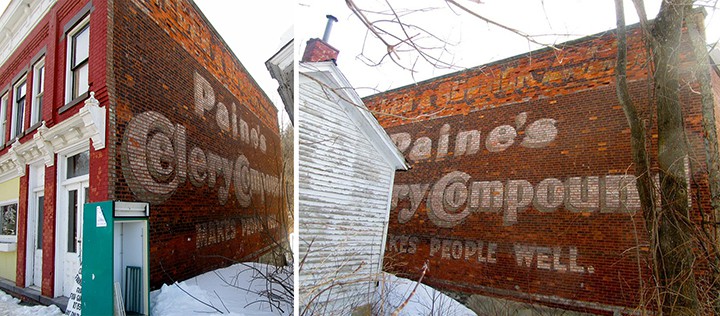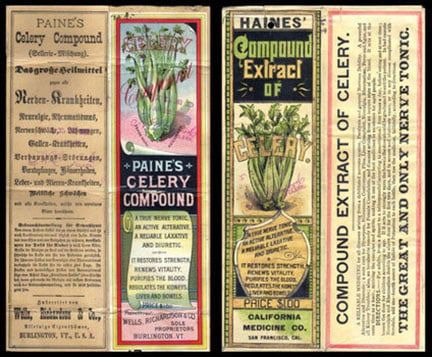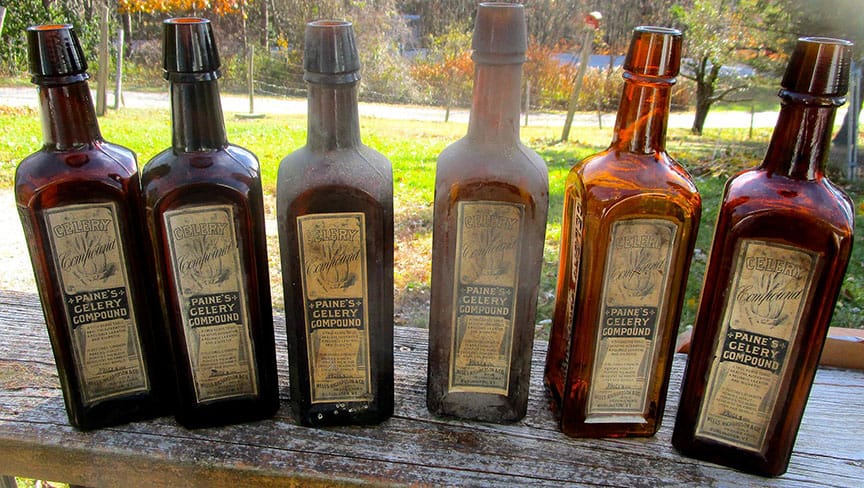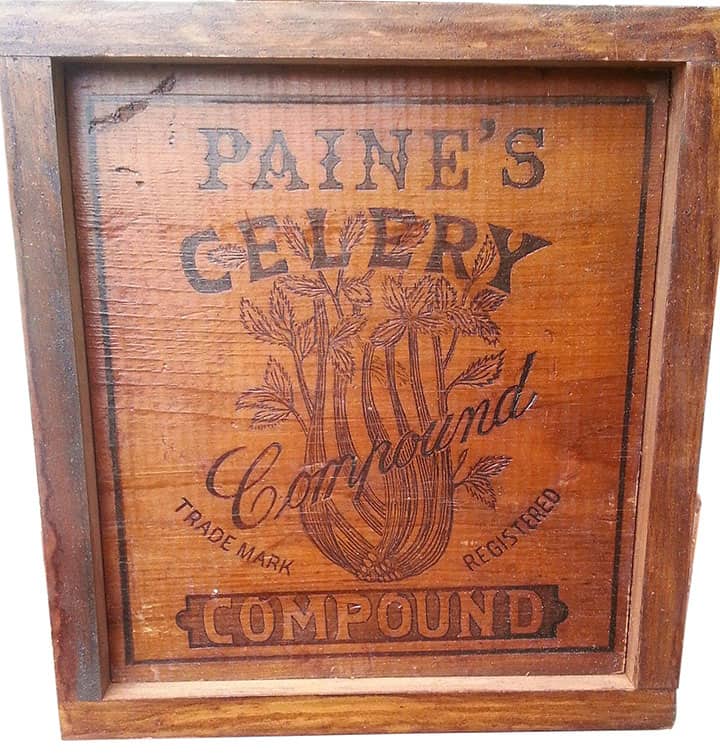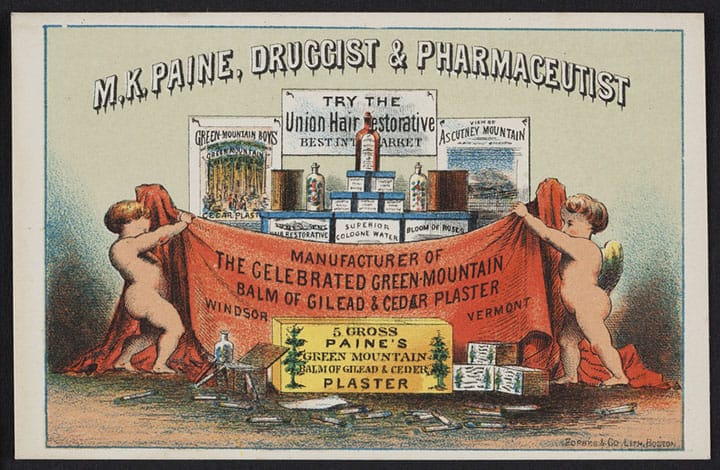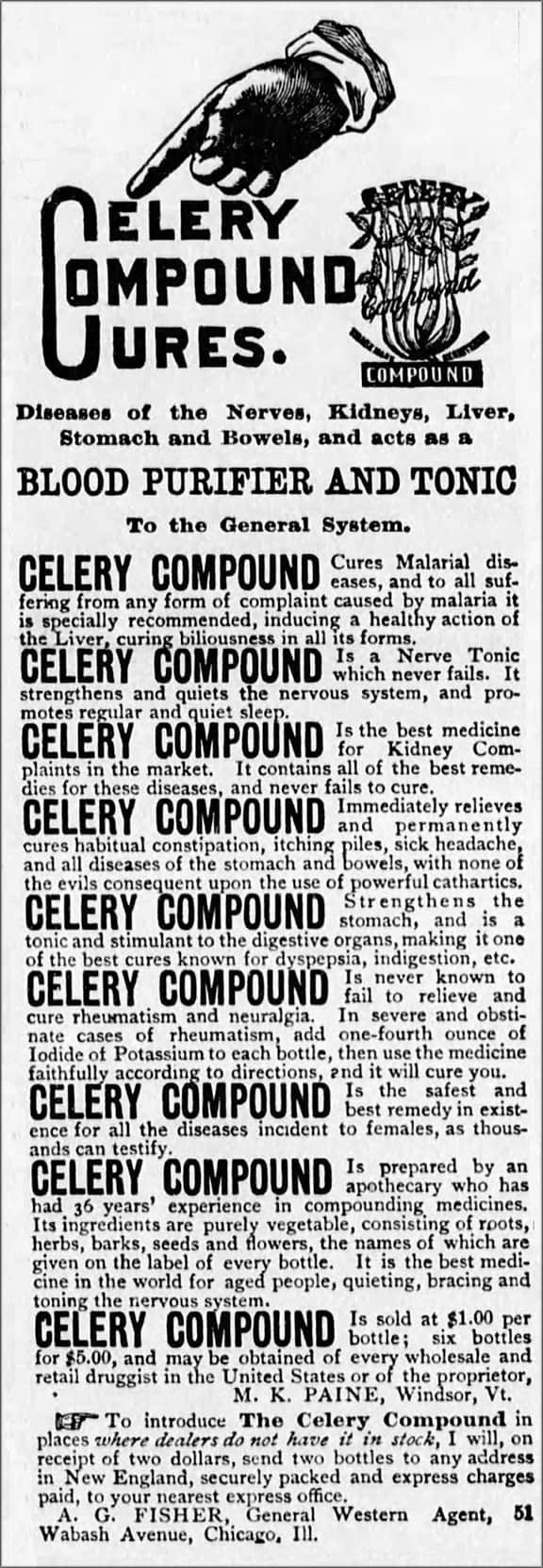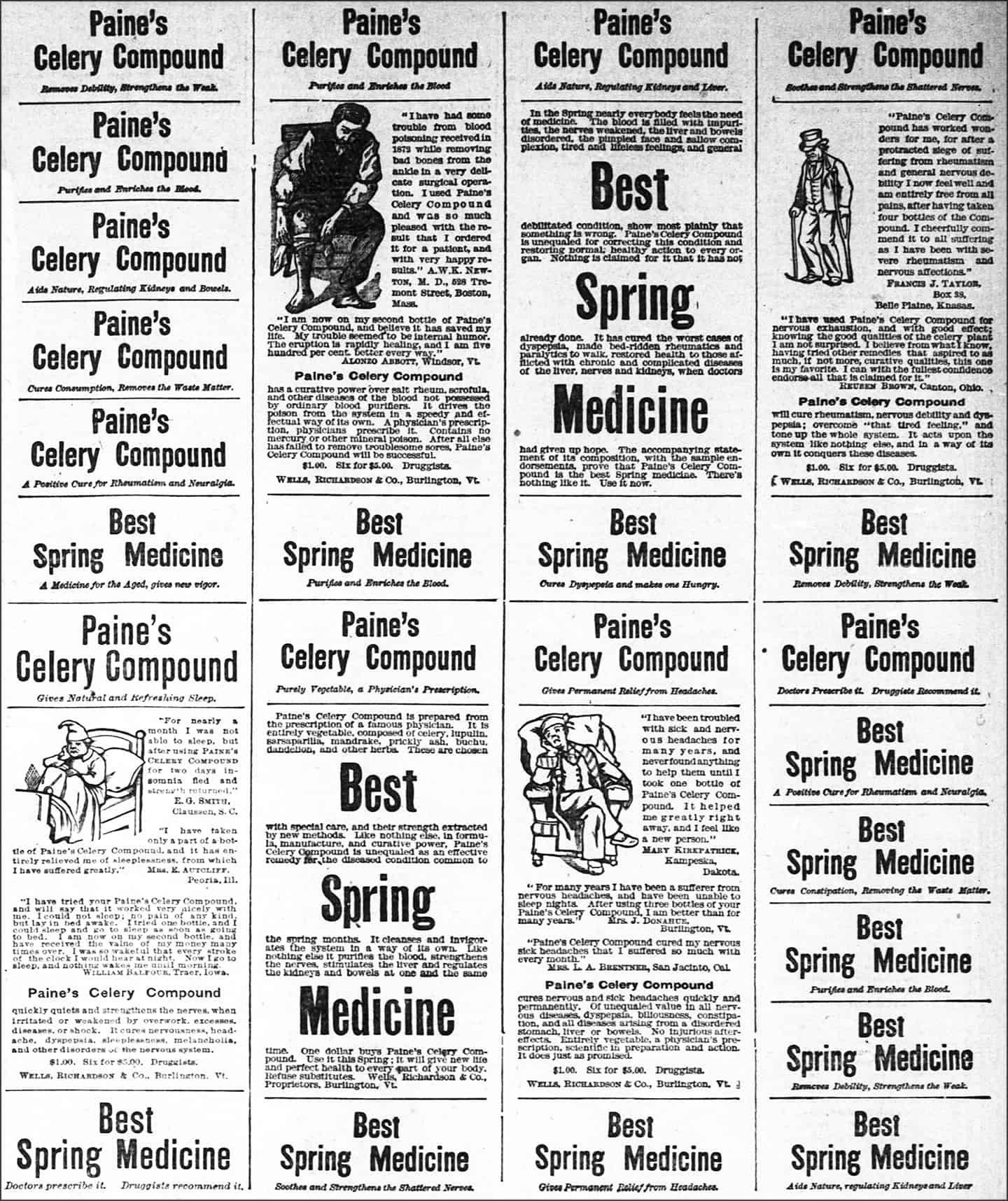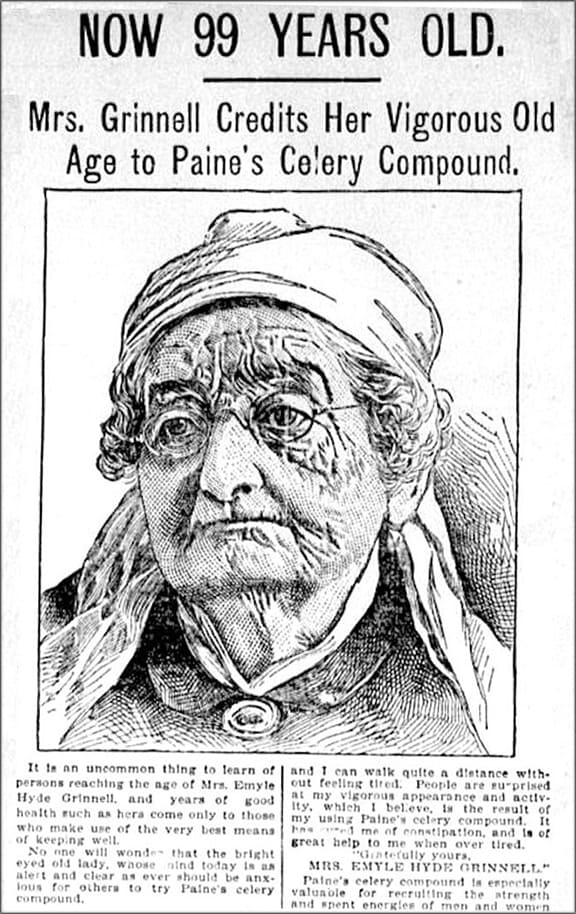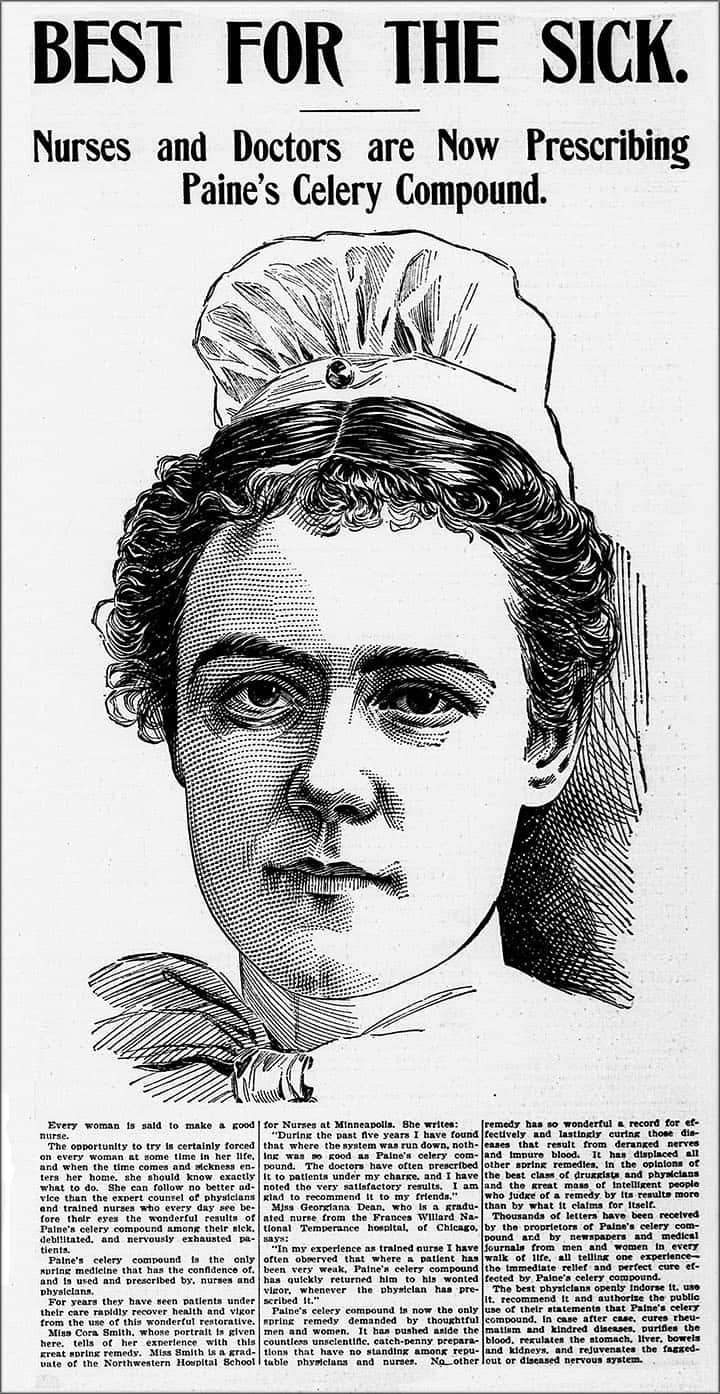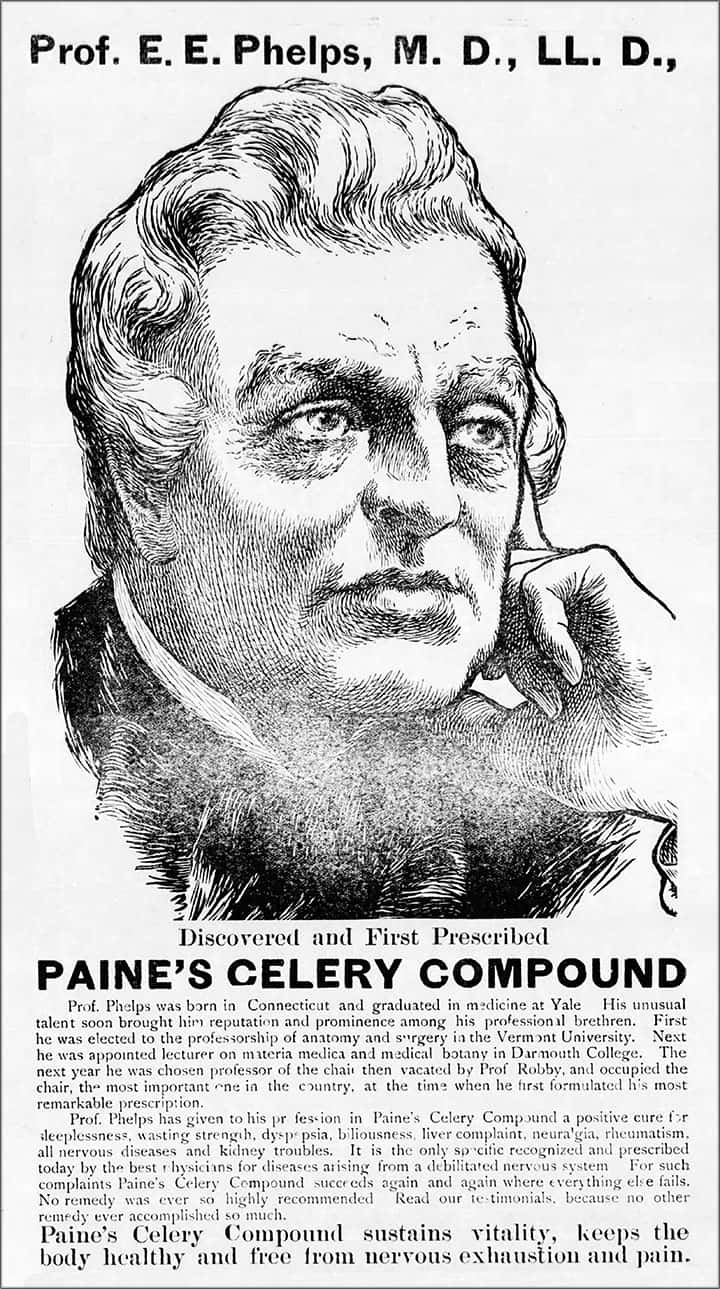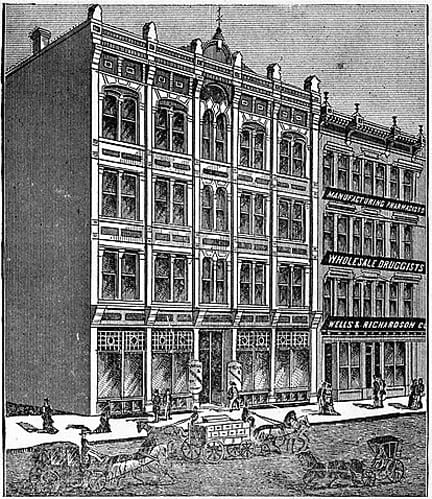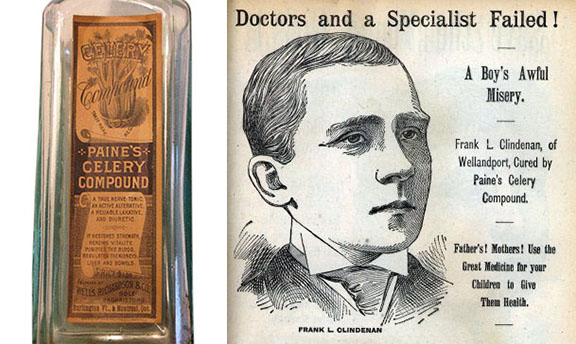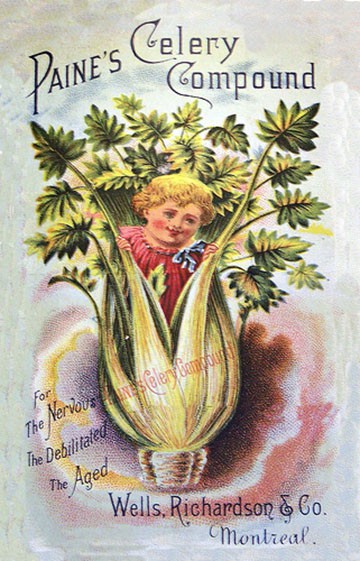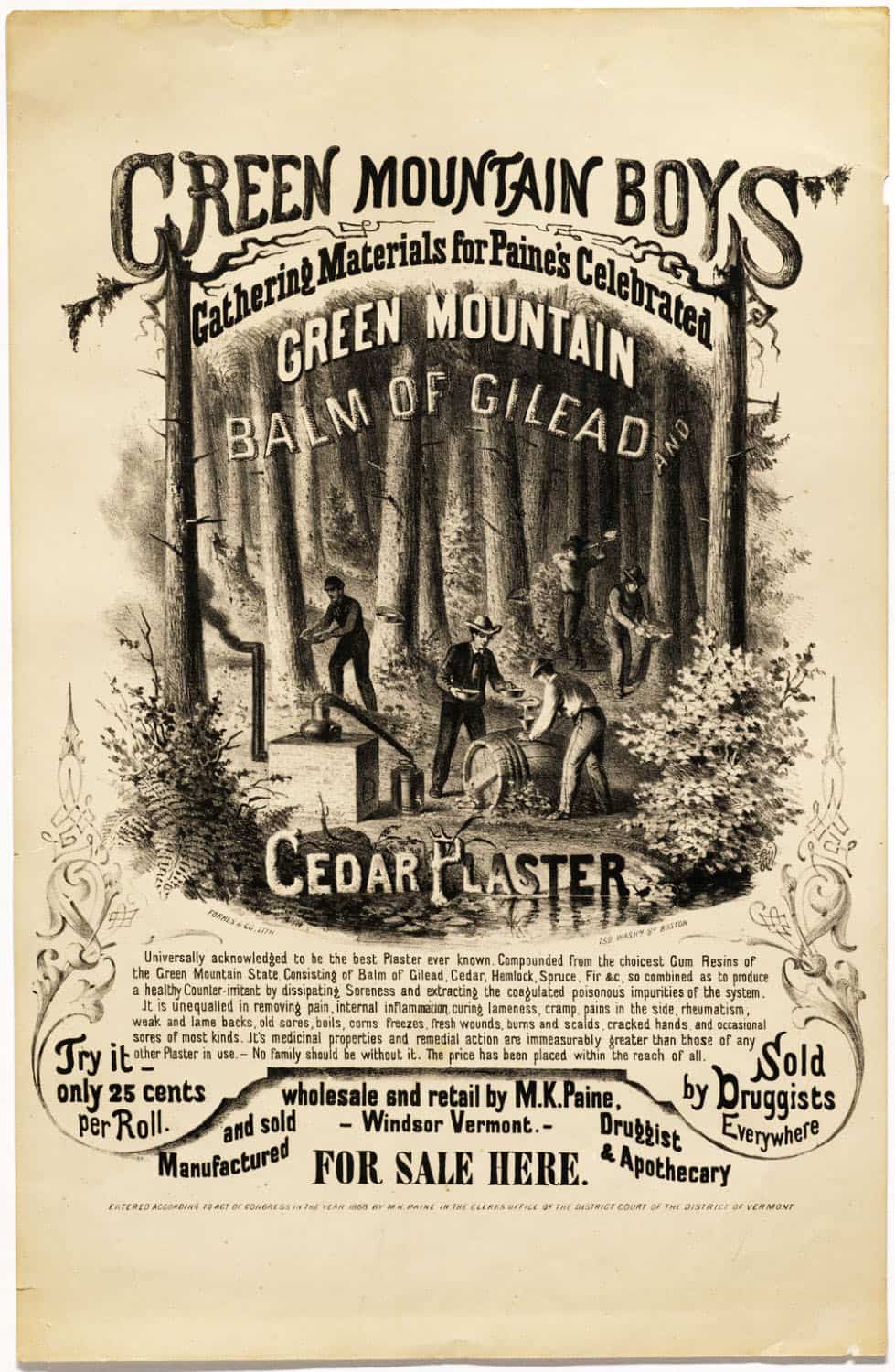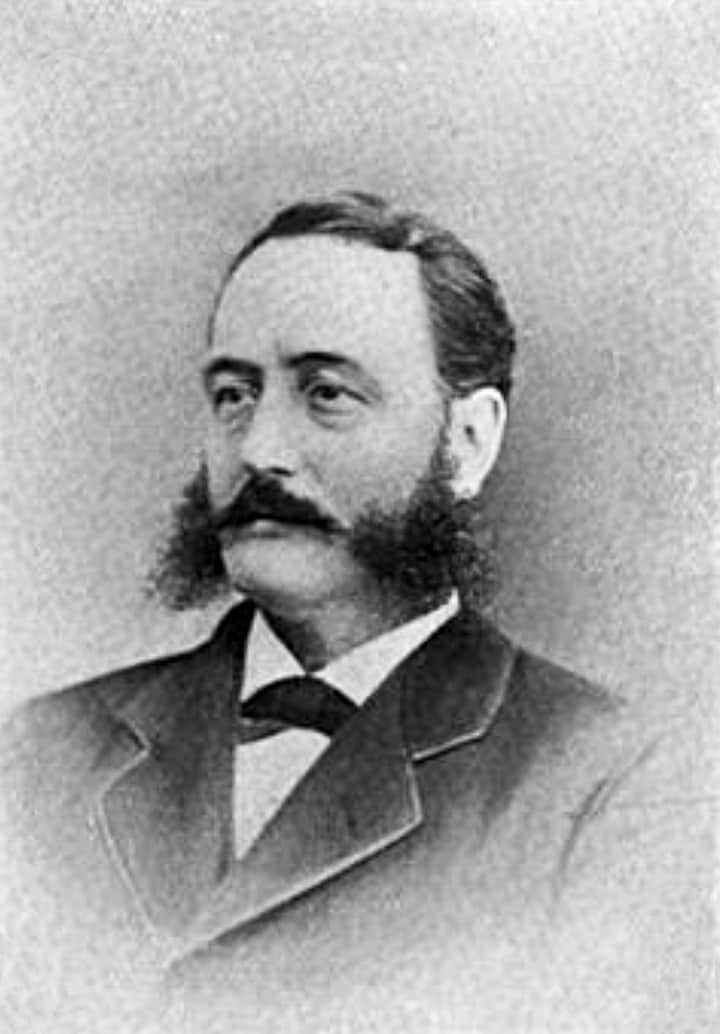Paine’s Celery Compound – Makes People Well
31 October 2015 (R•110115)
![]() I think many bottle collectors and diggers start out with an amber Paine’s Celery Compound in their collection. It actually looks just like a bitters bottle. I know when I was first ‘decorating’ with bottles, far before collecting them, I asked my father, Ferdinand Meyer IV, a bottle collector in Baltimore, to send me a care package of bottles in Houston for window placement. A Paine’s was in the box and is pictured below. Probably worth $5, if that much, they are so common. It’s deep on a shelf somewhere in the house. There was also a Drake’s Plantation Bitters. That’s another story.
I think many bottle collectors and diggers start out with an amber Paine’s Celery Compound in their collection. It actually looks just like a bitters bottle. I know when I was first ‘decorating’ with bottles, far before collecting them, I asked my father, Ferdinand Meyer IV, a bottle collector in Baltimore, to send me a care package of bottles in Houston for window placement. A Paine’s was in the box and is pictured below. Probably worth $5, if that much, they are so common. It’s deep on a shelf somewhere in the house. There was also a Drake’s Plantation Bitters. That’s another story.
A couple of years ago, I even found a Paine’s Celery Compound at the historic Guardhouse Museum on the corner of the Augusta State University campus. Read: Bottles from the Augusta Arsenal
Colors
The Paine’s Celery Compound bottles actually come in different colors which surprised me. Here is a really nice picture below from Eric Richter and his cool 1780 Farmhouse web site. Eric adds, “The red amber version of these Paine’s Celery Compound is so common, I know a digger in Maine that leaves these in the dumps where he digs for bottles. My acquiring of the Topaz variant got me more interested in a color run, and the finding of the Canadian issue in aqua makes a very colorful and contrasting set.”
The second picture is a wonderful color run of Paine’s Celery Compound from the Gerard Dauphinais collection.
Anomalies & Errors
Richard Siri states that he dug and still has a Paine’s Celery Compound, only it’s spelled “Cellery.”
Gerard Dauphinais provides this picture below of “the weirdest Paine’s embossing that I’ve found and it’s on an aqua example. The word Paine’s is usually 2 5/8 inch long. On this example, it’s only 2 inches long. Only one I’ve seen.”
Building Graphics
Here are a couple of pictures below that I found online and on Facebook showing Paine’s Celery Compound advertising painted on the sides of buildings. I can’t remember who posted the color images so I am sorry I do not have your name. The top image is from Church Street in Burlington, Vermont. The color photographs are from West Pawlet, Vermont.
Read: Looking at Dr. Pierce’s Barn Advertising
Advertising & Packaging
As a designer, I like the Paine’s Celery Compound graphics using celery on the bottle labels, packaging and shipping crates. Look at the striking colors, art and typography as represented on the Paine’s Celery Compound package below.
Look at this run of labeled Paine’s Celery Compound from John Antonez.
And the graphics on this Paine’s Celery Compound shipping crate from Gerard Dauphinais.
Here is a trade card from the Historic New England Museum depicting products from M. K. Paine, Druggist & Pharmaceutist. It is undated and does not show the Paine’s Celery Compound, so it may predate 1874.
Newspaper
The black & white newspaper advertising is interesting too as you can see below. The earliest ad I could find was 1880. The product started out sooner than this though, probably in 1874. Many newspaper reporters were assigned to secure testimonials with photographs which subsequently appeared in a Paine’s Celery Compound advertisement as promised. These pictures were then illustrated. The men who permitted the use of their names for this purpose, several of them afterward admitted that they had never tasted the “Compound,” but that they were willing to sign the testimonials for the joy of appearing in print as “prominent citizens.” The advertising for Paine’s Celery Compound seems to stop in 1905.
Read: Big Advertising Pays for Paine’s Celery Compound
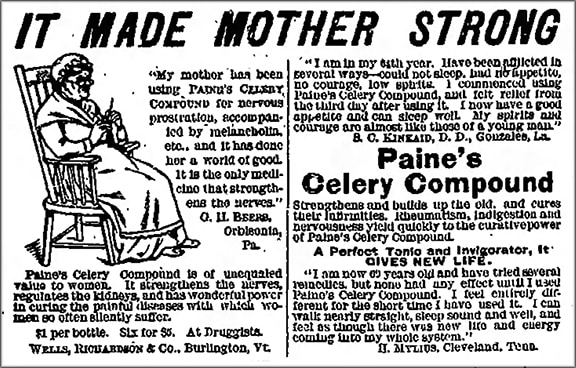
“It Made Mother Strong” Paine’s Celery Compound – Davenport Daily Republican, Thursday, September 9, 1880
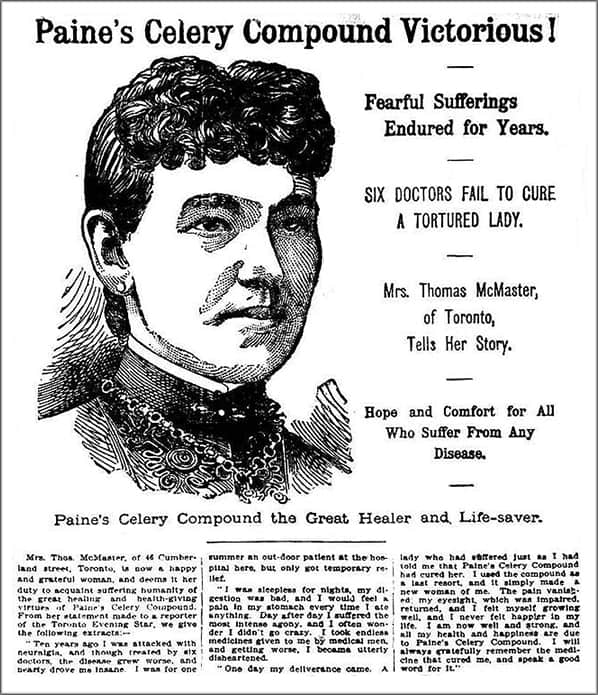
“Paine’s Celery Compound Victorious” advertisement – Mail and Empire (Toronto, Canada), April 11, 1896
Professor Edward E. Phelps
According to Commercial and Financial New England Illustrated, in 1874, Edward E. Phelps, M.D., L.L.D., professor of theory and practice in the Dartmouth Medical College, compounded the formula for a tonic prescription having as one of its basic properties the celery seed. This formula was placed upon the prescription books of M. K. Paine, a local druggist, and became known as Paine’s Celery Compound. This formula was prescribed to such an extent by local physicians that Professor Phelps finally consented to have his prescription placed upon the market in the form of a proprietary medicine. Mr. Paine, the local druggist, soon found himself unable to cope with the constantly increasing demand for Paine’s Celery Compound, and in 1887 he transferred his interests to the Wells & Richardson Company. During the next twelve months, the sales were over 72,000 bottles, and ever since there has been an increasing demand for this famous tonic prescription. The Wells & Richardson Company’s laboratories are among the finest in the country, and in these laboratories Paine’s Celery Compound is prepared and shipped to all parts of the world.
Wells & Richardson
Paine’s Celery Compound was marketed by Wells & Richardson who were wholesale druggists in Burlington, Vermont. You can see their building above. They were formed in 1872 by a group of Civil War veterans including General William Wells who made his reputation in Gettysburg. Paine’s, when under the control of Wells, Richardson, was also distributed through a Montreal, Canada branch, explaining why Paine’s Celery Compound bottles and advertising show up regularly in Canada. From Glen C. Phillips below:
These guys really took the product to new levels. They even embellished the recipe. Besides celery, some reports state that the compound contained 21% alcohol and coca (cocaine). I even saw a heroin note. This concoction packed a punch.
I thought this paragraph was interesting about profits from the American Druggist and Pharmaceutical Record, Volumes 50-51 in 1907, “St. Jacob’s Oil made $2,800,000 for its owners. Hood’s Sarsaparilla brought $2,500.000 in profits. Cutieura, estimated profits, $3,750,000. Hostetter’s Bitters, estimated profits, $11,400,000. Davis’ Pain Killer, estimated profits, $4,200,000. Warner’s Safe Cure, estimated profits, $9,000,000. Paine’s Celery Compound, estimated profits, $2,600,000.”
Green Mountain Balm of Gilead
Paine also sold Gilead and Cedar Plaster. Look at this super lithograph held by the Boston Museum of Art, “Green Mountain Boys Gathering Materials for Paine’s Celebrated Green Mountain Balm of Gilead and Cedar Plaster, Manufactured and sold wholesale and retail by M. K. Paine, Druggist & Apothecary – Windsor Vermont.
Colonel Milton Kendall Paine
(From the October 31, 1896 edition of the Vermont Journal, Windsor, Vermont.)
Col. Milton Kendall Paine died at his home on State street, early Tuesday morning, in the 63d year of his age. He had been ailing for some time, but was able to be out and about his house until within a very few days. Saturday afternoon, he had a fainting turn, and failed rapidly thereafter until death ensued. Col. Paine was born in Boston, Mass., July 15, 1834. His parents, Isaac and Martha Locke Riggs Paine, moved to Orange county, Vermont, three years later, where the deceased passed his boyhood days. He was educated in the common schools and academy at Chelsea, where he made the subject of chemistry a special study.
In his fifteenth year, Col. Paine came to Windsor to serve an apprenticeship of seven years in the drug store then conducted by A. and H. Wardner, where George M. Stone is now located. In 1856 he entered into business for himself in the building, so long familiar to Windsorites, as “Paine’s Drug Store”. His capital, financially speaking was but $30, but behind it was a thorough training and determination to excel in his business. Success began to attend his efforts at once, and before two years had elapsed he had met all financial obligations incurred in setting out in business.
Col. Paine was of an inquiring and inventive turn of mind, fertile and original in his resources, and fond of experimenting. As a consequence he not only arrived at improved methods of compounding drugs, but devised many things in the way of perfumes, salves, and medicines that became popular and had extensive sale. Among them might be named Ascutney Anodyne, Balm of Gilead and Cedar Plaster, Syrup of Tar and Wild cherry, etc., etc. But his most widely know original invention was undoubtedly the popular patent medicine, celery compound, that bears his name. After nearly forty years of the closest application, he found himself breaking in health and began to dispose of his business. He sold his interest in the celery compound business to the Wells & Richardson Co. in Burlington in 1887, and a year later disposed of his drug business to F. P. Whitcomb. He had a wide reputation as one of the ablest and most skillful druggists in New England, and recognition of his standing was made by the State Pharmaceutical association in twice electing him its president.
Col Paine was for many years especially active in masonic circles, and retained a deep interest in the fraternity to the last. He was made a mason in 1859 in Vermont Lodge, No. 18, and for a time was its secretary. He also received his chapter, council and commandery degrees in the local bodies, and was frequently called to official position by his masonic associates, not only at home but in the state organizations. He was grand king of the grand chapter in 1867; R. I. grand master of the grand council in 1866-67; deputy grand commander of the grand commandery knights templar in 1875-76; and had been the representative of the grand masonic bodies of other states near those of Vermont. He was prominently identified with the introduction into the state of that branch of masonry, known as the Scottish Rite, receiving the degrees in Boston, Mass., in the sixties. He was a charter member of Windsor Lodge of Perfection; its first master, and at the time of his death had been its treasurer for many years. By his zealous and untiring efforts the lodge was instituted and developed into a strong and active factor in the masonic life of eastern Vermont. Col. Paine was frequently called to official stations in the state bodies of the rite at Burlington, and in September, 1877, attained to the honor and distinction of the 33rd degree. He was a charter member of DeMolay Conclave, No. 5, Knights of the Red Cross of Constantine, and for many years its commander, and had been at different times and officer of the state grand body. He was also a member of the Vermont Veterans’ association, which was organized in June, 1891, and is composed of members of the fraternity, who have been masons, twenty-one years and over.
In politics, Col. Paine was a staunch and active republican. He was a member of Governor Farnham’s staff in 1880-82; a member of the republican state committee from 1888 to 1894; a justice of the peace for several years, and had been chairman of the republican town committee since 1894. He was a corporator of the Vermont Society Sons of the American Revolution, and was its treasurer at the time of his death, having been retained in office since 1890 by successive, annual reelections. Of late years he had manifested deep interest in church and Sunday school work, being a member, and for a time treasurer, of the Congregational church, and superintendent of the school connected therewith. In Col. Pain, Windsor had a most loyal, adopted son, and successful business man, and in his death this community loses a valuable member and an earnest Christian worker.
Col Paine was married in May 1857, to Helen A. Austin, daughter of Dr. Horace Austin of Athol, Mass., who died in September 1864, leaving a daughter, Jennie Louise Paine, now Mrs. W. R. Sheldon of Charlestown, N. N., In May, 1872, he married Mrs. Mary Lemmex Smith, by whom, and by a brother living in the west, he is also survived.
Men of Vermont: Illustrated Biographical History of Vermonters & Sons of
Vermont. Ullery. Brattleboro: Transcript Publishing Company, 1894, p 294
(portrait p 294)
Milton Kendall PAINE, of Windsor [Windsor County, Vermont], was born 15 July 1834 in Boston [Suffolk County], Massachusetts, son of Isaac and Martha Locke(RIGGS) PAINE. He is of English descent. When WASHINGTON assumed command of the Revolutionary forces at Cambridge, Milton’s great great grandfather, William PAINE, then in the eighty-third year of his age, entered the camp accompanied by his son and two grandsons, and when the general questioned him with regard to his own presence there, he replied that he was there to encourage his son and grandsons and see that they did their duty to their
country. Milton Kendall PAINE received his educational training at the common and high schools of Chelsea [Orange County, Vermont], but before attaining his fifteenth year he entered the drug store of A. & H. Wardner of Windsor as clerk, and seven years afterward started in that business in the same town, with a capital of thirty dollars, running in debt for his entire stock. So successful was he, owing to his prudence and energy, that in two
years he was free from all pecuniary obligations and had built up a trade that was ever widely increasing.
A man of original mind and natural inventive faculty, developed by careful observation even in his youthful days, he began the preparation of perfumes by processes originated by himself, and later compounded the “Wild Cherry Tonic,” which had an immense sale, not only in the state, but in various parts of the Union. His crowning effort was the invention of Paine’s Celery Compound, of which the local sales were immediately enormous, and the medicine is now known and used throughout much of the civilized world. Mr. PAINE has also originated many appliances for the economical manufacture of
medicines, and has received several U. S. patents for articles of practical value. His health failing after nearly forty years of arduous application to his profession, he disposed of his stock in trade, and on 19 March 1887 sold his interest in the Celery Compound to Wells & Richardson Company of Burlington. He retired from active business 20 April 1888, one of the oldest and most widely known druggists of the state.
An active Republican, attesting his faith by his works, he has held several official positions; was a member of the staff of Governor FARNHAM in 1881, receiving the rank of colonel; in 1888 was elected the Windsor County member of the state Republican committee, which position he still holds; is a justice of the peace; was for two years president of the Vermont Pharmaceutical Association; was an incorporator, and has been for four years past the treasurer of the Vermont society, Sons of the American Revolution; is treasurer of the Old South Congregational Church at Windsor, and
superintendent of the Sabbath school; in the Masonic order has attained an eminent position, having reached the thirty-third degree, and is one of the senior member of the Supreme Council in the state of Vermont. In May 1857 Mr. [Milton Kendall] PAINE married Helen A., daughter of Dr. Horace AUSTIN, of Athol [Worcester County], Massachusetts, whom he had the misfortune to lose by death in September 1864. She left one daughter, Jennie Louise PAINE, now Mrs. W. R. SHELDON, of Charlestown [Sullivan County], New Hampshire. On 06 May 1872 he [Milton Kendall PAINE] wedded Mrs. Mary (LEMMEX) SMITH, daughter of William H. and Elvira (WARNER) LEMMEX, of Windsor [Windsor County, Vermont].

